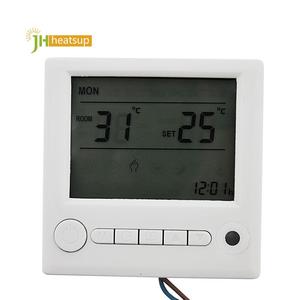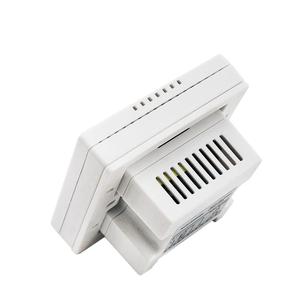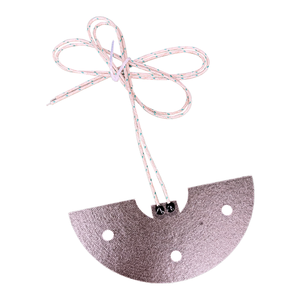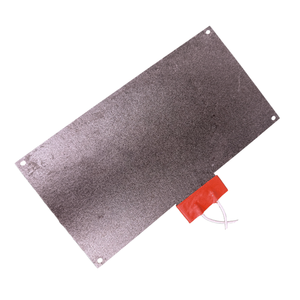
All categories
Featured selections
Trade Assurance
Buyer Central
Help Center
Get the app
Become a supplier

(6609 products available)











































Heaters are devices used to generate heat. A temperature sensor heater is a sensor and heating unit combination that regulates the temperature of a given area. These can form part of HVAC (heating, ventilation, and air conditioning) systems in buildings. However, they are also used in industries and factories to maintain constant temperatures for food and chemical processing. Without the constant input of heat, many products could spoil or become unstable, eventually creating safety issues.
Some common types discussed below are as follows:
Thermocouple heaters
A factory or industrial setting will use thermocouple heaters as temperature sensors often combined with heating units. The device consists of two different metal wires joined at one end, which react to changes in temperature. When heated, they produce voltage changes that indicate what the current temperature is. These are wired to control systems that adjust how much heat needs to be supplied to maintain a constant temperature.
Infrared temperature sensor heater
An infrared temperature sensor heater detects heat by measuring the level of infrared radiation emitted by an object. Infrared heaters emit radiation that raises the temperature of an object. When the object's temperature increases, it produces more infrared radiation. The increase in radiation is detected by the infrared sensor that relays the information to a control system. The control system uses the information to adjust the irradiation of the heater until the desired temperature is reached.
Optical fiber temperature sensor heater
An optical fiber temperature sensor detects heat by measuring light signals that normally emit from an optical fiber. When the temperature changes, the light signals change in terms of wavelength, intensity, and other characteristics. The control system interprets this measurement and adjusts the output of a heater to maintain the desired temperature.
PID controller and temperature sensor heater
A PID (proportional-integral-derivative) controller utilizes a heating element as a temperature sensor. The sensor continuously monitors the temperature. The proportional part of the controller then calculates the difference between the desired set point and the actual measured temperature.As a result, it's able to provide proportional control of power to the heater.A wide variety of heating sources in nature can serve as heaters. For example, solar energy is captured through solar panels. It is then converted into electrical energy, which can subsequently be used in electrical heaters. In another example, geothermal energy heats the earth from the active decay of radioisotopes inside the earth.
Operating temperature range:
It refers to the ambient temperature range within which the temperature sensors can function effectively. It is crucial to know that outside this range, they might not perform accurately or could get damaged.
Sensor type:
Different types of sensors, such as thermocouples, RTDs, thermistors, and infrared sensors, have distinct characteristics, working principles, and suitability for specific applications.
Heater wattage:
It indicates the power output of the heater. Different applications require distinct wattages to achieve and maintain desired temperature levels.
Voltage rating:
The voltage sensor heaters must operate safely and efficiently is indicated. The offered voltage sensor heaters work under a specific voltage, which ensures safety and performance.
Design and material:
The sensor's construction and the materials used influence its ability to withstand harsh conditions and its longevity.
Detailed specifications and maintenance information of the temperature sensor heater can be found on Alibaba.com.
Regular inspections:
Schedule routine checks on the heaters to ensure there's no visible wear, tear, or damage.
Clean:
Keep the heater and its surroundings clean. This helps to prevent any debris buildup that may compromise performance.
Calibrate:
If applicable, regularly calibrate the temperature sensors heater to ensure accurate readings and adjustments.
Check connections:
Inspect electrical connections for any signs of loosening, corrosion, or damage. Ensure they're secure and clean.
Maintain insulation:
Ensure that insulation materials around the heater remain intact and free from damage. This aids in energy efficiency and safety.
Test controls:
Regularly test and adjust temperature control devices to guarantee they're functioning properly and maintaining the desired settings.
Monitor performance:
Keep an eye on the heater's performance, checking for any unusual signs, like fluctuations in temperature or strange noises.
Professional servicing:
Depending on the specific type and application, it's essential to seek professional servicing and maintenance advice periodically.
Adhere to guidelines:
Always follow the manufacturer's instructions and recommendations for maintenance and care to ensure longevity and optimal performance.
A temperature sensor heater has diverse applications in many industries.
Food Industry
Temperature sensors play a significant role in the food processing industry to guarantee product safety and quality. These sensors help monitor cooking, cooling, freezing, and heating temperatures. Businesses can use data from these sensors to comply with food safety regulations, preventing the growth of bacteria that can cause foodborne illnesses.
Manufacturing Industry
In manufacturing processes like chemical production, metallurgy, and plastics, precise temperature control is essential. Heater temperature sensors facilitate optimal functioning of equipment like reactors, ovens, extruders, and molding machines by ensuring the ideal temperature is maintained. This results in product quality, process efficiency, and smooth operation without any interruptions.
Pharmaceuticals and Biotechnology
In the pharmaceutical and biotechnology industries, it is crucial to maintain precise temperature conditions during processes like fermentation, incubation, and drug formulation. Heater temperature sensors help ensure that these processes occur at the proper temperature, which is essential for the stability and efficacy of drugs to be maintained. By doing so, these industries can achieve compliance with regulatory standards and avoid any contamination or product failure.
Choosing the right heater temperature sensor for a specific application involves careful consideration of various factors. These factors will ensure optimal performance, reliability, and compatibility.
Matching the Sensor to the Application's Temperature Range:
Different temperature sensors have varying operating ranges. For example, Thermocouples can measure very high temperatures (up to 2000°C or 3600°F), but Thermistors typically have a lower upper limit (up to 130°C or 266°F). So, it's necessary to consider the application's temperature range. Then, choose a sensor capable of measuring within that range.
Considering the Sensor's Accuracy and Precision:
Applications require different levels of accuracy and precision. In a case where a food processing application needs exact temperature readings to ensure product safety and quality, it is important to prioritize a strongly sensor with high accuracy. Consider the sensor's specifications and select one that meets the particular application's requirements.
Thinking About the Environmental Conditions:
Factors like humidity, dust, moisture, or exposure to chemicals can influence sensor selection. For example, in a humid environment, a sensor exposed to moisture may need to be sealed or coated to prevent damage. Hence, it's important to evaluate the environmental conditions where the sensor will be installed. Then, choose a sensor designed to withstand those conditions.
Ensuring Compatibility with Existing Systems:
When a particular industrial application already uses certain data acquisition systems or control units, the heaters temperature sensors selected should be compatible with those systems. To ensure compatibility, it's necessary to consider factors like communication protocols and electrical connections. Then, choose a sensor that can integrate seamlessly with the existing components.
Q1: What are the benefits of using intelligent temperature sensors in industrial settings?
A1: Intelligent temperature sensors offer numerous advantages, such as enhanced accuracy, self-diagnosis capabilities, and data logging and record-keeping capabilities. These sensors can provide more precise measurements than traditional sensors, which helps optimize industrial processes. Intelligent temperature sensors can monitor and adjust industrial processes independently, reducing the need for manual intervention. Additionally, they can diagnose their faults and inform maintenance personnel, minimizing downtime. Intelligent sensors can also log data, enabling businesses to analyze temperature trends and make informed decisions to improve their processes.
Q2: What are the benefits of using digital temperature sensors?
A2: Digital temperature sensors offer several benefits, including increased accuracy, easy integration with digital systems, remote monitoring capabilities, and enhanced data analysis. These sensors provide more precise temperature readings and digital output, making them easier to use in digital systems and automating temperature measurement. Many digital temperature sensors can be connected to the internet, enabling remote monitoring and control of temperature in real-time from anywhere, anytime. This allows businesses to respond quickly to any changes or issues that arise and take proactive measures to maintain product quality and prevent losses. Digital temperature sensors can also be connected to data analysis software, allowing businesses to analyze temperature trends and gain insights to improve their processes.
Q3: What is the difference between a thermocouple and an RTD temperature sensor?
A3: Thermocouples and RTDs (Resistance Temperature Detectors) are two types of temperature sensors with different operating principles and characteristics. Thermocouples work by measuring the voltage generated by two different metals at varying temperatures, whereas RTDs function by observing changes in electrical resistance as a function of temperature. Consequently, thermocouples are generally more suitable for measuring a broad range of temperatures, while RTDs are recognized for their precision and stability within a more restricted temperature range.